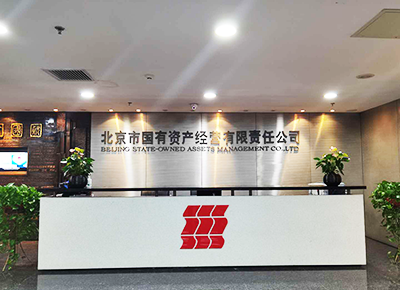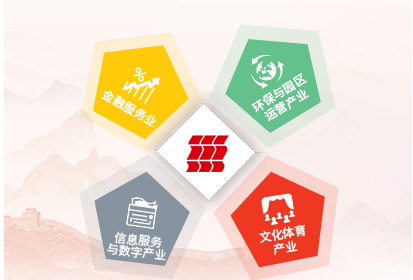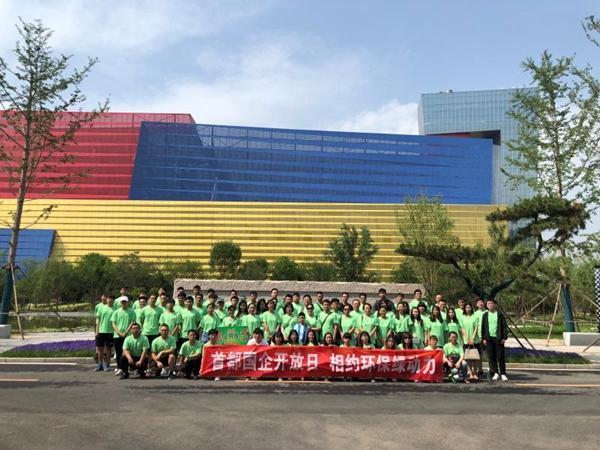On January 22, the National Voluntary Greenhouse Gas Emission Reduction Trading Market was launched in Beijing. The construction of CCER Trading Market is an institutional innovation to dedicate society-wide forces to joint greenhouse gas emission reduction actions, which is useful to establish a national carbon market system featuring the complementary and interconnected mandatory carbon market and voluntary carbon market. This marks another milestone in the construction of China’s carbon market.
What is China Certified Emission Reduction (CCER)? Why is CCER launched? What is its significance for green development and “Carbon Peaking and Carbon Neutrality” Goals? What does it have to do with common people? An exclusive interview is made by reporter of Beijing Daily to China Beijing Green Exchange, operator and manager of CCER System.
Assisting all types of market entities in conserving energy and reducing carbon
In recent years, extreme weather conditions, such as heavy rainfalls and typhoons, have taken place more frequently. Therefore, it has become increasingly urgent to solve the problem of climate change attributed to greenhouse gas emissions. To this end, a more sophisticated market-based carbon reduction mechanism is pivotal.
What’s being traded in the process of carbon trading? At present, there are mainly two products available for carbon trading: One product is emission allowances, i.e. Beijing Emission Allowance (BEA), which are allocated by the Government to major emitters (compliance entities) within a specified period. In other words, it is carbon emission right.
In carbon emission trading market, if the actual carbon emission volume of a major emitter is lower than the total allowance granted by the Government, the surplus allowance can be sold, and the corresponding income can be obtained from the market trading. On the contrary, if the actual carbon emission volume exceeds the allowance, it is necessary to buy the surplus allowance from other emitters in the market and fulfill the carbon emission allowance surrender obligation. Those major emitters, who fail to surrender their carbon allowances in full, will be imposed with penalties.
CCER is another product of carbon trading. For entities other than major emitters, the Government encourages them to voluntarily develop and implement emission reduction projects in accordance with the methodologies prescribed by the Ministry of Ecology and Environment, boost the development of renewable energy, forestry carbon sink, methane emission reduction, energy conservation and efficiency improvement, reduce greenhouse gas emissions and increase carbon sink. The emission reductions, owed to these certified emission reduction projects, are registered as CCER upon verification by nationally designated third-party organizations. CCER can be traded in the market.
According to Wang Naixiang, Chairman of China Beijing Green Exchange, CCER Trading Market can underpin various entities’ energy conservation and carbon reduction actions. Owners of emission reduction projects can gain economic returns by selling CCER and participate in the development and application of low-carbon technologies more passionately. High-emission enterprises can adopt CCER to fulfill their carbon emission reduction obligations. Enterprises and institutions can buy CCER to offset carbon emissions, achieve carbon neutrality of products and major activities, fulfill low-carbon commitments and assume social responsibilities.
Synergizing mandatory carbon market and voluntary carbon market
Unlike the conventional markets (such as stock market, commodity market, foreign exchange market and gold market) driven from the bottom up by the actual needs of market participants, carbon market is a top-down market artificially created by the Government to address the climate crisis and greenhouse gas emissions.
Mandatory CEA and voluntary CCER form two interrelated trading markets, i.e., China Carbon Emission Rights Trading Market and CCER Trading Market. Since July 2021, China Carbon Emission Rights Trading Market has come into operation. Nowadays, CCER Trading Market has been also officially launched.
“Mandatory CEA and voluntary CCER are complementary and interconnected, together constituting national carbon market system. This is of great significance to realize Carbon Peaking and Carbon Neutrality Goals through market mechanisms and build a beautiful China”, says Wang Naixiang.
According to Administrative Measures for Carbon Emission Right Trading (For Trial Implementation), major emitters may use CCER to offset the surrender of CEA every year, and offset ratio shall not exceed 5% of allocated CEA. For the moment, as CCER usually embodies price advantage over mandatory CEA, major emitters could choose to buy CCER and achieve surrender and compliance at lower costs.
As a trading enterprise on the first day of CCER trading, the project in which Beijing Energy Holding Co., Ltd participated in was a forestry carbon sink project. According to Jin Shengxiang, Director of Safety and Environmental Protection Supervision Department of Beijing Energy Holding Co., Ltd, this project can encourage peasant household to make the best of afforestation, reforestation and other technologies and absorb excess greenhouse gases emitted by humans into the atmospheric environment. Enterprises can buy forestry carbon sink CCER for CEA surrender and compliance or carbon neutrality. Project income can be returned to peasant household, increase their income, broaden financing channels of forest workers and further strengthen the willingness of afforestation and management of existing forests, thereby increasing carbon sink and leveraging forest function of carbon sequestration.
A future vision for ordinary people to also participate in CCER
According to Administrative Measures for China Certified Emission Reduction Trading (For Trial Implementation), legal persons, other organizations and natural persons, that comply with the relevant national regulations, may participate in voluntary emission reduction trading. Therefore, market entities of CCER trading may be enterprises, public institutions, financial institutions, etc., and can also be natural persons.
In other words, ordinary people may also participate in voluntary emission reduction trading, offset their own carbon emissions by buying CCER, and fulfill their social responsibilities. For example, a person, who takes business travel from Beijing to other places by train, by car, by plane and by any other means of transportation, is bound to generate carbon emissions to some extent and form a carbon footprint. In the future, this person is advised to offset this portion of carbon emissions by buying CCER in the market and contributing to green development.
However, it is also necessary to gradually construct and improve CCER market. In the initial stage of CCER market, enterprises and various institutions are dominate entities. In the future, with further progress in CCER trading, natural persons will also have the opportunity to participate. But it’s not the right time as yet, as the construction of CCER market should gradually proceed and competent authorities should further clarify the relevant policy requirements.
Beijing has made every effort to build infrastructure platform for National Voluntary Greenhouse Gas Emission Reduction Trading Market
On the basis of assuming the function of serving as the center for Chinese National GHGs Voluntary Emission Reduction and other green assets trading, the China Beiing Green Exchange is committed to being a national green exchange with an international vision. This is an important orientation assigned to China Beiing Green Exchange by the State Council.
Since 2013, pilot carbon markets in Beijing and other places have been inaugurated one after another. As a pilot trading platform designated by the Beijing Municipal Government, China Beijing Green Exchange constantly assists city-wide major emitters in annual surrender and compliance work. Up to now, the total trading volume of various products has exceeded 105 million tons and the turnover amount has exceeded RMB4.1 billion in China Beijing Green Exchange, coming out top among regional carbon markets all over the country. Plentiful fruits of decade-long construction of the pilot carbon markets not only substantially support pollution mitigation and carbon reduction in Beijing, but also gather rich experience for Beijing to undertake the construction of CCER trading market.
The launch of CCER Trading Market is a complex systematic project involved with institutional rules, infrastructure, regulatory framework and other aspects. CCER market infrastructure construction, undertaken by Beijing, mainly comprises two systems, namely, CCER registration system and CCER trading system. The former is mainly used to CCER registering, certifying and issuing, and the latter is mainly used to verify CCER trading.
To make greater contributions to the overall situation of green development work in Beijing and the whole China, the Beijing Municipal Bureau of Ecological Environment carefully prepares and submits relevant plans in accordance with the work arrangements of the CPC Beijing Municipal Committee and Beijing Municipal Government in recent years, actively seeks after the support of the Ministry of Ecology and Environment for CCER trading institutions to take root in Beijing, coordinates the work related to the construction of CCER Trading Market in accordance with the requirements of the Ministry of Ecology and Environment, and furnishes an important foothold for smooth launch of CCER Trading Market.
Under strong support of Beijing Municipal Bureau of Ecological Environment and Beijing Municipal SASAC, China Beijing Green Exchange has developed and constructed two major systems of CCER Trading Market. Moreover, China Beijing Green Exchange is responsible for operation and management of CCER trading system. According to Zhang Jie, General Manager of BSAM (superior shareholder of China Beijing Green Exchange), BSAM, China Beijing Equity Exchange and China Beijing Green Exchange jointly establish a “three-tier synergy” task force, coordinate and promote relevant policy support and resource import with all-out strength of BSAM, fulfill construction tasks in detail under the highest standard of the capital city, and ensure that CCER market grows strong with a complete success.






